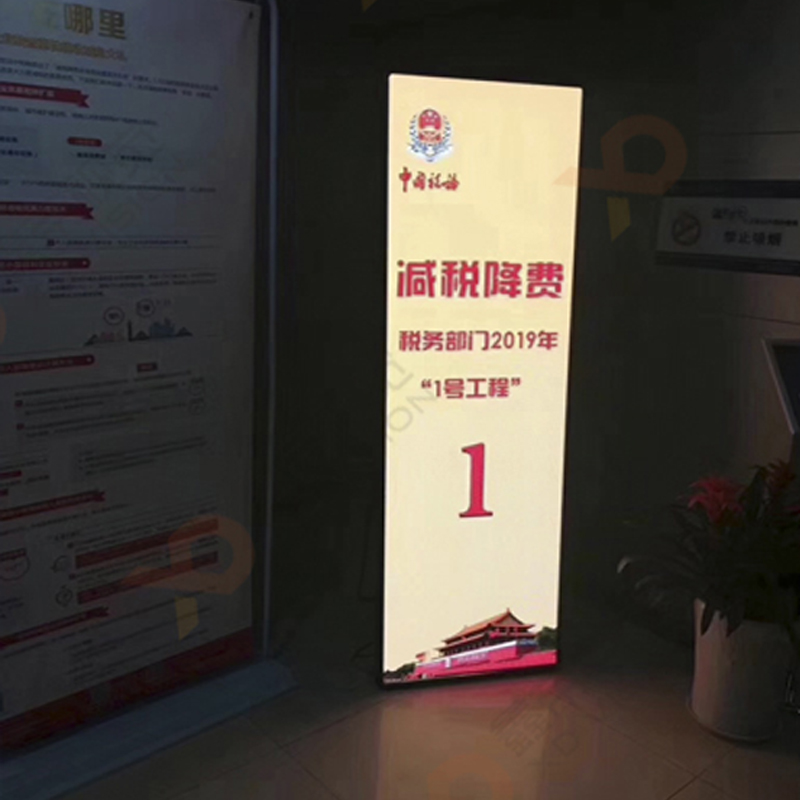This series is a professional advertising LED Screen for classic indoor use. Small in size, it is convenient to be placed in shops, cafes, clothing stores, restaurants and many other places. Easy to operate. Wifi connect and controlled by mobile App, USB to play video or display pictures. Cabinet with wheels, easy moveable. Regular size around 640*1920mm in Poster LED Display, it will be a very good choice for advertising screen for all shops. It can be customized to ourdoot types or different sizes.
Waterproof Led Display Screen Wall,Led Display Advertising,Led Display Advertising Billboards,Full Color Led Display Guangzhou Cheng Wen Photoelectric Technology Co., Ltd. , https://www.ledscreencw.com
Organic light-emitting diode displays (OLEDs) are entering the field of mobile devices and TV displays, and Sony has announced that it will launch OLED TVs by the end of 2007. But in the long run, the killer application of OLEDs may be a high-efficiency white light source for everyday lighting. A research project in Europe has developed a prototype that may make lighting applications more practical, and similar projects are being carried out in other regions.
Europe's three-year ICT (Information and Communication Technology) and Lighting Applications OLED Project (OLLA) plans to develop high-brightness OLEDs for ICT and next-generation lighting. The project team said recently that it has produced a prototype of a white OLED light source with an efficiency of 25 lumens/W and a half-life of more than 5,000 hours at an initial luminance of 1,000 Cd/m2.
Compared to traditional tungsten filament bulbs, "we doubled efficiency and extended life by five times." OLLA project manager Peter Visser said, "We expect OLED efficiency to be compact with a few years later. The light source is comparable.†The fund support period of the OLLA project is just over half. The ultimate goal is to increase the efficiency of OLED lighting to 50 lumens/W, and the initial brightness is 10,000 hours at 1,000 Cd/m2.
The above white OLED device was designed at the Philips Research Laboratory. Karsten Diekmann, a senior researcher at Osram Opto Semiconductors, another project partner, commented: “A lifetime of 5,000 hours while achieving high efficiency is a very important step in the use of OLED technology for lighting applications.â€
Last year, Philips and Novaled collaborated to develop a prototype device with a color rendering index (CRI, which measures the ability of the light source to present the true color of the object) to 88, comparable to the three primary colors, with an efficiency of 32lumens/W. The total brightness is 1,000 Cd/m2. According to Novaled, the life of the production device needs to be at least 10,000 hours, and the life of the prototype has exceeded 20,000 hours.
Osram GmbH is one of the world's largest manufacturers of lighting products and is currently working on the application of small molecule technology in the field of lighting. Its OLED device has an illumination efficiency of 18lumens/W, while the conventional bulb is 12lumens/W.
Because OLEDs lack a solid benchmark, the measured results continue to change people's goals. “There is no standard in OLED measurement when comparing the results of different research organizations around the world, which is a problem,†said Dietrich Bertram, OLED development manager at Philips Lighting. “This has led to huge differences in measuring with integrated balls or using stacked layers. Therefore, the OLLA project decided to develop a white paper on OLED lighting measurements to support the standardization of performance and measurement metrics.â€
In addition, Tsinghua University researchers in Taiwan are working with Advanced Electroluminescent Sciences in Seattle. The latter is a start-up R&D company with the goal of developing a solid-state lighting system based on white OLEDs. Researchers at Princeton University also reported progress in white-emitting OLEDs. The university's research work was funded by the US Department of Energy and the University's spin-off of Universal Display, and established a partnership with the University of Southern California. Researchers have modified the OLED structure to extend the lifetime of blue-emitting components, and the faster burning of such devices has been a problem.
Thinner screen
At the same time, manufacturers began to introduce OLED TVs and active matrix OLED displays. Since the OLED does not require a backlight, power consumption is reduced, and a thinner screen can be made than a flat panel technology such as LCD and plasma. OLEDs can also be printed on flexible materials to make a rollable display. According to market research firm DisplaySearch, shipments of OLED displays increased by 29% in 2006 to reach 72.1 million.
1 2 Next Page 

November 12, 2023